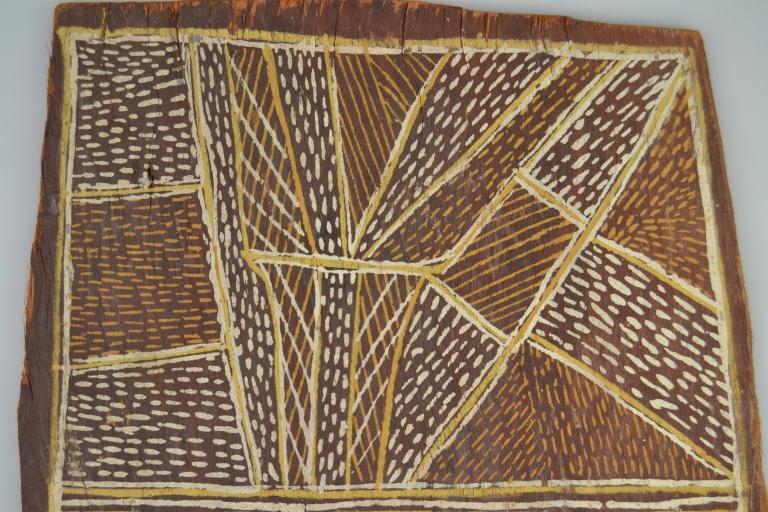
Aboriginal and Torres Strait Islander collection
The museum holds almost 700 items made by Aboriginal and Torres Strait Islander peoples, including a range of tools, personal ornaments, weapons and vessels.
This is part of the Oceania collection.
Most of this material was collected after World War II. At the beginning of the War, many of the most valuable collections of the City of Liverpool Public Museum (now World Museum) were evacuated from the city for safekeeping. The 'Pacific Basement', as it was known, was not evacuated as it was thought to be safe. Unfortunately, this was not true. On 3 May 1941 a bomb fell on the public libraries next door and the resulting fire gutted the museum building. Most of the Pacific material in the museum at the time was lost.
After the war the museum tried to replace some lost items by acquiring collections from private collectors or other museums that were rationalising their holdings at that time.
Most of the Aboriginal and Torres Strait Islander material arrived in World Museum through a few major sources:
- The first was Somerset Archaeological and Natural History Society, Taunton, in 1942. This purchase comprised about 200 items from donors in the Somerset area, and most of the collection came from the Pacific. They include items from South Australia donated to Taunton Museum in 1917 by the widow of anthropologist Sir Edward Burnett Tylor.
- One of the best-known collectors of Pacific material in England in the first half of the twentieth century was Harry Geoffrey Beasley. He and his wife Irene Marguerite Beasley kept a museum at Cranmore, Chislehurst, Kent, from 1895 until his death in 1939. Irene dispersed the collection in the early 1950s, largely to British public collections. She gave the museum about 3,000 items in 1954. About 2,000 of these were from Oceania, acquired mainly from sales rooms and by private purchase.
- Another substantial collection was bought from Norwich Castle Museum in 1956. The museum began as part of a literary institute in 1824, and is a source of some older items. They include Aboriginal stone tools donated by writer of imperial adventure stories Sir Henry Rider Haggard, wooden weapons donated by W. J. Fanning, and feather ornaments donated by Richard Allen.
- The Wellcome Historical Medical Museum, London, gave large numbers of ethnographic artefacts to several large public museums between 1951 and 1981, including Liverpool. Many had been acquired through agents at sales rooms such as Stevens of Covent Garden and lack documentation on their origins, but still include items of interest. They include shields, boomerangs and several dilly bags.
- World Museum also received a large number of Australian stone tools from private collectors, most notably through Dr. T. D. Campbell’s 1954 donation of material from South Australia, and colonial administrator C. W. Hobley’s 1947 bequest of tools mostly from Victoria.
- The Aboriginal and Torres Strait Islander collection is not currently on display. World Museum is working with colleagues in Australia to better understand the histories of the material in the collection and their continuing significance today.
